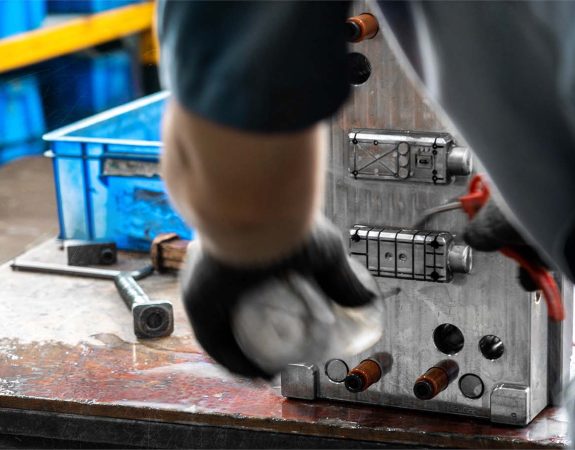When it comes to production methods, two processes, injection moulding and 3D printing are often compared. These two methods represent a classic debate of ‘old’ vs. ‘new’ in today’s manufacturing industry. While 3D printing has allowed for innovative design implementation within hours, plastic injection molding remains an industry standard for high-quality, reliable, large batch production.
When comparing the two methods, cost is often the first topic that comes to mind: Which is cheaper, injection molding or 3D printing? It is crucial to determine when it is more economical to use injection molding over 3D printing, and vice versa. In this article, we will analyze the differences in per unit cost, total cost and advantages of using each process.
The cost of 3D printing versus injection moulding a part. For this example, we’ve taken an SLS printed and injection moulding PA+GF part that is 84.5mm x 80.0mm x 24.0mm in size with a standard deburr finish.

*Please note that the chart is crafted based on the specific case mentioned. The cost per unit of your specific part may vary significantly based on factors such as size, geometry, complexity, material, post processing, and other considerations. For an accurate cost assessment of your part, we encourage you to get a rapid quote from our team at hlhrapid.com.
In the case above, it is estimated that a mould would immediately cost the client $3,000 to have manufactured. Of course, this can vary depending on the size, complexity, and where the tool is manufactured.
Based on the chart above, 3D printing is a much cheaper option for lower quantities due to the absence of high upfront mold tooling costs. As we reach 500 pieces and above, injection moulding starts becoming more cost-effective. At 10,000 pieces, the total cost of injection moulding is approximately $12,900 (around 99 cents per piece), while 3D printing costs $70,000 (around $7 per piece), making additive manufacturing five times more expensive.
In injection moulding, every design modification or iteration usually demands the reworking of the mould, which can be costly and time consuming. Due to the nature of the process, significant changes may even require a completely new tool. This puts 3D printing at a notable advantage in this comparison.

3D printing allows you to update and change your design throughout the entire production process. Not only does it provide flexibility, but it is also a faster choice and more cost-effective option for small quantities. This makes additive manufacturing the perfect choice for prototyping and iterations.
The argument typically goes that the cost to deliver a 3D-printed part will always remain the same, regardless of whether you are producing 1 or 1000 units. However, this is not the case, as evident in the chart above. 3D printing technologies has advanced over the years. Nowadays, manufacturers like HLH Rapid with automation systems, streamline processes and larger industrial printers, now enable the production of larger quantities at lower unit costs.
Additive manufacturing is slowly establishing itself as a viable production tool, and we’re increasingly seeing our clients utilize these benefits. However, this does not mean that additive manufacturing should be treated as a complete replacement for traditional manufacturing. For large-scale production, traditional methods still offer unmatched economies of scale.
Can you prototype with injection moulding? At HLH Rapid, we use a single-cavity aluminum mold, known as a prototype injection mold tool, that can produce hundreds of parts. Nevertheless, project budgets are generally tight and deadlines are even tighter, so why would you invest the time and money needed to manufacture a prototype via injection molding? Why not go straight from your 3D printed prototype to production tooling?
With prototype injection mold tooling, also known as rapid tooling, you can test the part in the production intent material, understand how the part will work when manufactured in the production process, and it allows for low volume production runs to test the market.

Simply send your 3D CAD drawing across to get a cost and lead time
HLH Rapid has over 15 years of experience in 3D printing, injection molding, rapid tooling, and scaling from prototype quantities to product quantities. Request for an accurate quote from our team for multiple quantities to better understand which option is more cost-effective, when to justify high tooling costs, and which technology to use for your next rapid project.
